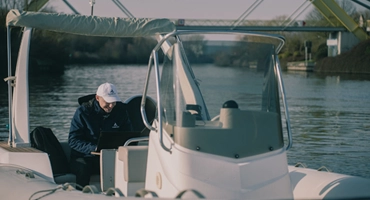Sailing also means knowing how to anticipate
Que l’on parte pour quelques heures de balade ou pour une croisière au large, la sécurité à bord doit toujours être une priorité. Le milieu maritime, parfois imprévisible, demande rigueur et vigilance. Bien s’équiper et adopter les bons réflexes permet de prévenir les risques et de profiter pleinement de sa navigation.
Clear regulations for each type of navigation
In France, the safety of pleasure craft is governed by Division 240, which defines the compulsory equipment according to the navigation zone (protected, coastal, semi-offshore or offshore waters). These rules guarantee a level of safety adapted to each situation, from a simple outing at sea to a more involved crossing.
Essential on-board safety equipment

Before setting sail, it is essential to check that the boat has the following equipment:
- Lifejackets: One per person on board. They must be adapted to the body shape of each person, easily accessible and regularly checked.
- Luminous locating devices: hand-held flares, reversing lights, waterproof lamp, etc. This equipment allows you to signal your position in the event of distress, particularly at night or in poor visibility conditions.
- Fire extinguishers: Mandatory whenever there is an engine or galley on board, they must be in good condition and within easy reach.
- Marine VHF: Recommended even for coastal navigation, it allows you to alert emergency services quickly and stay in contact with other vessels.
- Lifelines and harnesses: Essential for sailing in difficult conditions, particularly offshore or at night, they prevent you from falling overboard.
- Pump or bucket: To evacuate water in the event of seepage or waves on board.
- First aid kit: Complete, waterproof, with basic medicines and useful numbers.
- Anchor and mooring line: To stabilise the boat in the event of an emergency or breakdown.
The right reflexes for the skipper

Having the right equipment is not enough: you also need to know how to use it. The skipper is responsible for everyone's safety. Here are a few practices to adopt systematically:
- Check the equipment before each outing.
- Inform the crew about safety instructions, the location of equipment and what to do in the event of an incident.
- Check the marine weather and adapt your navigation.
- Never overestimate your abilities or those of your boat.
- Provide a functional means of communication, even outside areas with network coverage.
Sailing with confidence
Good preparation, the right equipment and responsible behaviour are the foundations of successful boating. On the sea, lake or river, safety is everyone's business. Knowing how to plan ahead guarantees peace of mind on board... and the pleasure of sailing with complete confidence.


